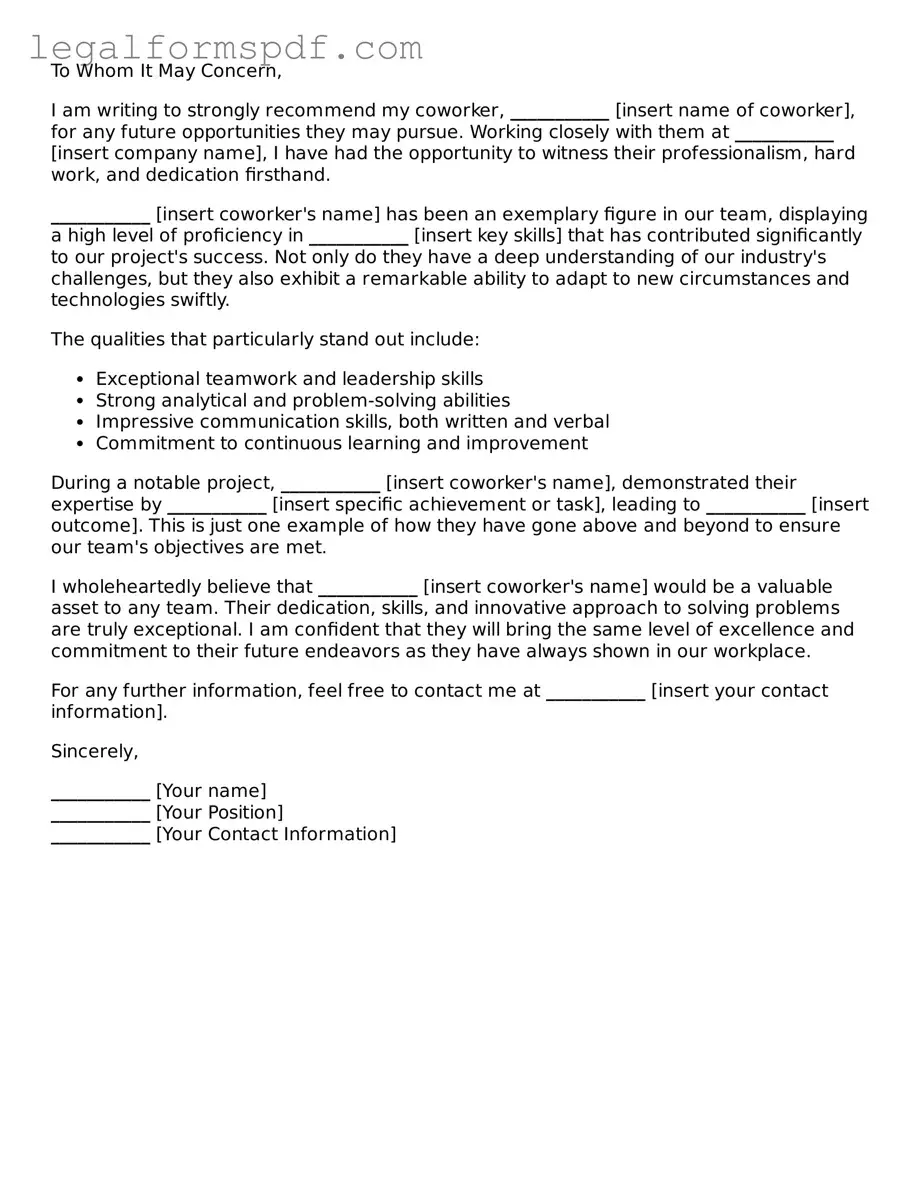A Letter of Recommendation for a Coworker shares commonalities with a Professional Reference Letter. Both serve to vouch for an individual's skills, work ethic, and character, usually within a professional context. The primary difference lies in their perspectives; while a recommendation letter often provides a detailed and personal account of the individual's contributions and work habits, a professional reference letter might adopt a broader view, summarizing the individual's professional achievements and reputation in the industry.
Similarly, a Letter of Intent (LOI) bears resemblance to a Letter of Recommendation for a Coworker. An LOI, used in various professional scenarios, outlines the intentions of one party to do business with another. Like a recommendation letter, it highlights strengths and potential for success. But, instead of focusing on an individual's attributes, it discusses the terms and scope of a proposed agreement between entities.
Another analogous document is the Endorsement Letter, which, like a recommendation letter, is written to support and verify the qualifications or skills of an individual or entity. An endorsement letter might be used in scenarios ranging from job applications to endorsing products or services. The main similarity lies in the persuasive intent behind both documents, aiming to sway the receiver in favor of the subject being discussed.
A Performance Review Report also shares similarities with a Letter of Recommendation for a Coworker. Both evaluate an individual's performance, strengths, and areas for improvement. However, a performance review is typically internal, used for assessing an employee's contributions and setting future objectives within the same organization, whereas a recommendation letter supports transitions or advancements outside the current workplace.
Similarly, a Testimonial Letter is written to attest to the qualifications, work ethic, and performance of an individual. Like a recommendation letter, it uses personal observations to build a convincing case for the subject's capabilities. However, testimonials are often used in more varied contexts, from job applications to supporting service providers and contractors in acquiring new clients.
The Experience Certificate is another document that mirrors the intent behind a Letter of Recommendation for a Coworker. It formally recognizes an individual's tenure and roles at a company, usually issued upon the employee's departure. Unlike a recommendation letter that offers qualitative insights, the experience certificate provides a factual account of the individual's employment duration and job description.
Lastly, a Character Reference Letter, primarily used in legal or community settings, also resembles a Letter of Recommendation for a Coworker. It focuses on an individual's personal qualities rather than professional competencies. Despite this, both documents aim to shed a positive light on the individual, supporting their character and reliability in various situations.
